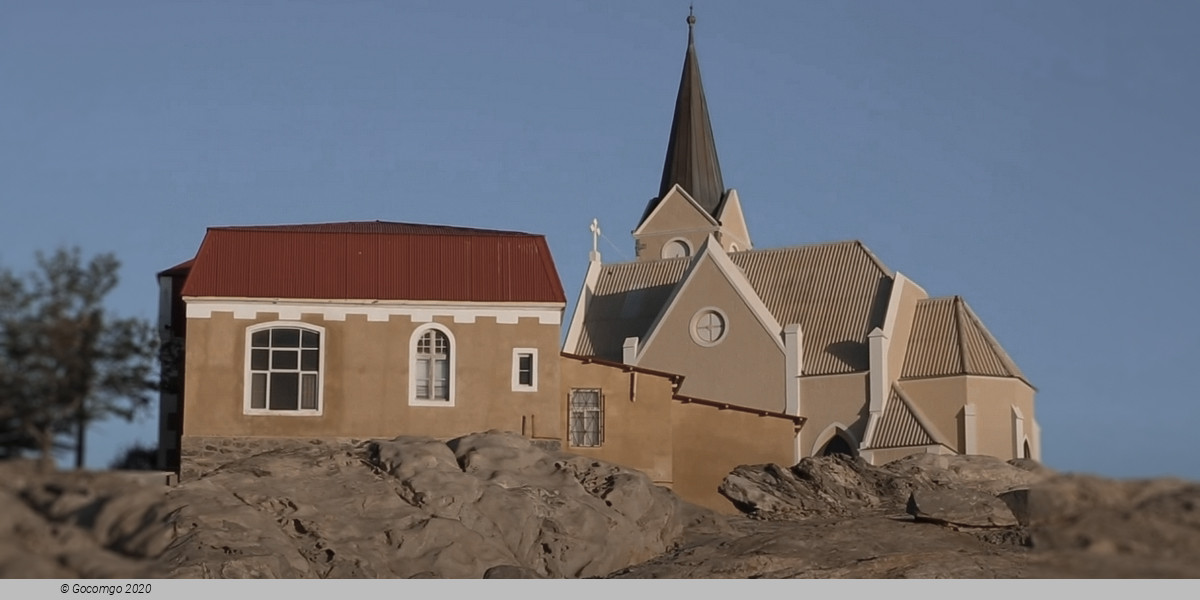Lüderitz

Lüderitz is a town in ǁKaras Region of southern Namibia. It lies on one of the least hospitable coasts in Africa. It is a port developed around Robert Harbour and Shark Island. The town is known for its colonial architecture, including some Art Nouveau work, and for wildlife including seals, penguins, flamingos and ostriches. It is also home to a museum and lies at the end of a currently decommissioned railway line to Keetmanshoop. The town is named after Adolf Lüderitz, founder of the German South-West Africa colony.
History
The bay on which Lüderitz is situated was first known to Europeans when Bartolomeu Dias encountered it in 1487. He named the bay Angra Pequena and erected a padrão (stone cross) on the southern peninsula. In the 18th century, Dutch adventurers and scientists explored the area in search of minerals but did not have much success. Further exploration expeditions followed in the early 19th century during which the vast wildlife in the ocean was discovered. Profitable enterprises were set up, including whaling, seal hunting, fishing and guano-harvesting. Lüderitz thus began its life as a trading post.
The town was founded in 1883 when Heinrich Vogelsang purchased Angra Pequena and some of the surrounding land on behalf of Adolf Lüderitz, a Hanseat from Bremen in Germany, from the local Nama chief Josef Frederiks II in Bethanie. When Adolf Lüderitz did not return from an expedition to the Orange River in 1886, Angra Pequena was named Lüderitzbucht in his honour. In 1905, German authorities established a concentration camp on Shark Island. The camp, access to which was very restricted, operated between 1905 and 1907 during the Herero Wars. Between 1,000 and 3,000 Africans from the Herero and Nama tribes died here as a result of the tragic conditions of forced labour. Their labour was used for the expansion of the city, railway, port and on the farms of white settlers.
In 1909, after the discovery of diamonds nearby, Lüderitz enjoyed a sudden surge of prosperity due to the development of a diamond rush to the area. In 1912 Lüderitz already had 1,100 inhabitants, not counting the indigenous population. Although situated in a harsh environment between desert and Ocean, trade in the harbour town surged, and the adjacent diamond mining settlement of Kolmanskop was built.
After the German World War I, capitulation South Africa took over the administration of German South-West Africa in 1915. Many Germans were deported from Lüderitz, contributing to its shrinking in population numbers. From 1920 onwards, diamond mining was only conducted further south of town in places like Pomona and Elizabeth Bay. This development consequently led to the loss of Lüderitz' importance as a trading place. Only small fishing enterprises, minimal dock activity and a few carpet weavers remained.
In an effort to remove colonial names from the maps of Namibia, in 2013 the Namibian government renamed the constituency ǃNamiǂNûs, its name prior to 1884.

